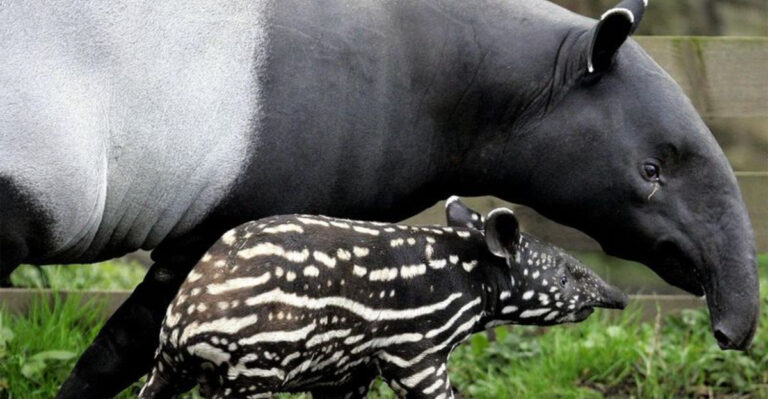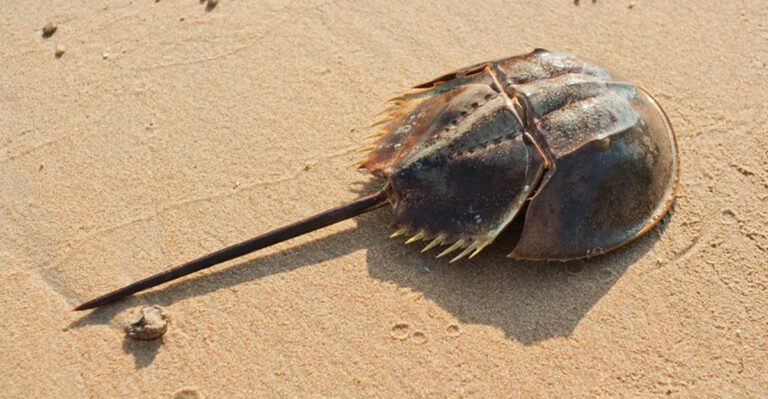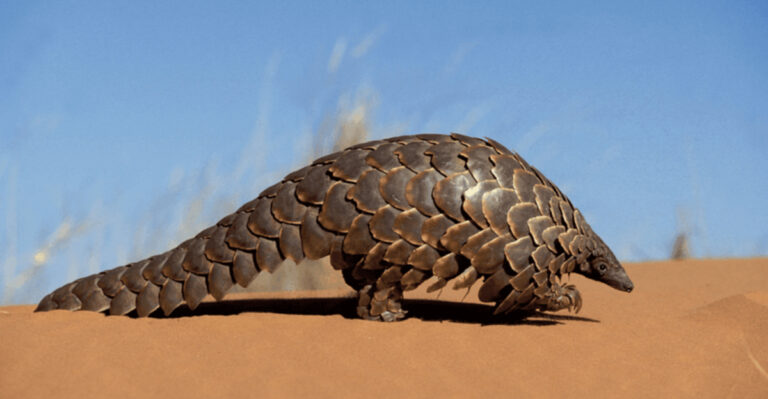Alligator Survival Secrets: How They Thrive Through Winter Without Hibernating
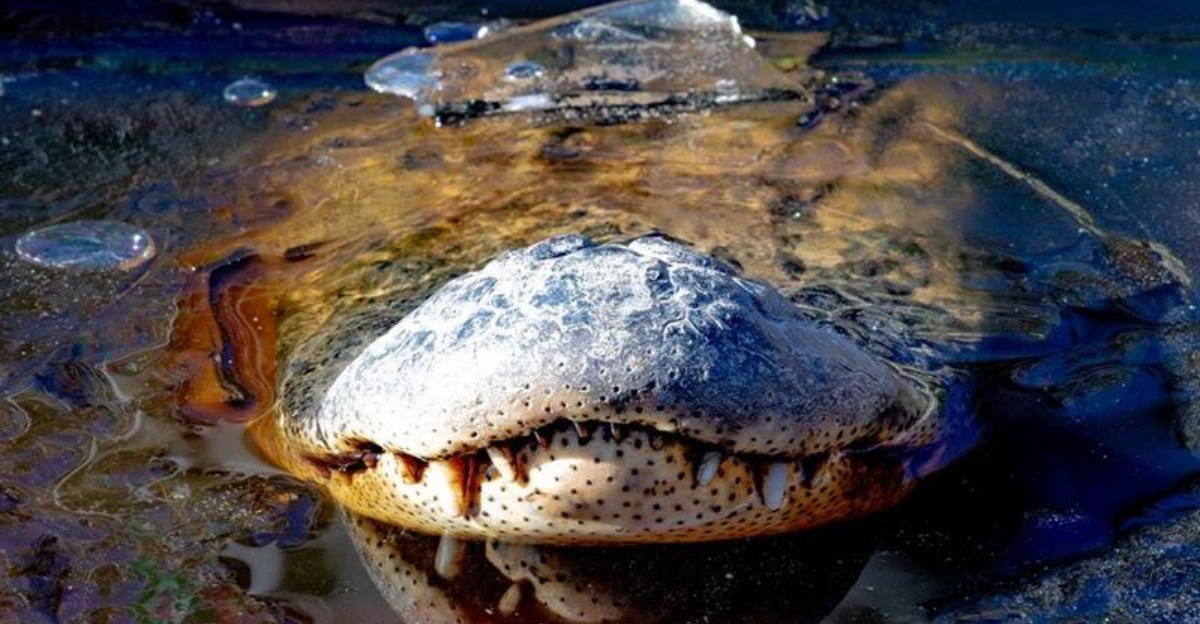
Alligators have mastered the art of winter survival without truly hibernating like many other reptiles.
Instead, these prehistoric-looking creatures employ a fascinating set of biological adaptations that allow them to thrive in cold temperatures.
While bears snooze away the winter months, alligators remain semi-active through a process called brumation – a reptilian version of slowing down rather than shutting down completely.
1. Nose Above Water Trick
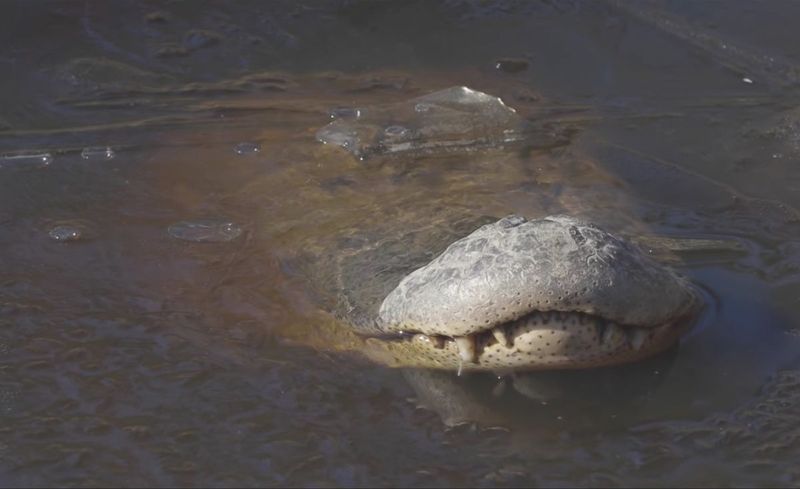
When temperatures drop, alligators perform what locals call the “nose above water trick.” They position themselves in water with just their nostrils exposed, creating a breathing hole that won’t freeze over.
This clever positioning allows them to breathe while keeping the rest of their body protected in slightly warmer water. The exposed snout might even get encased in ice, but alligators can break through when needed.
This technique is particularly common in shallow ponds and marshes where alligators congregate during winter months, sometimes with dozens of snouts dotting the surface like prehistoric periscopes.
2. Metabolic Slowdown
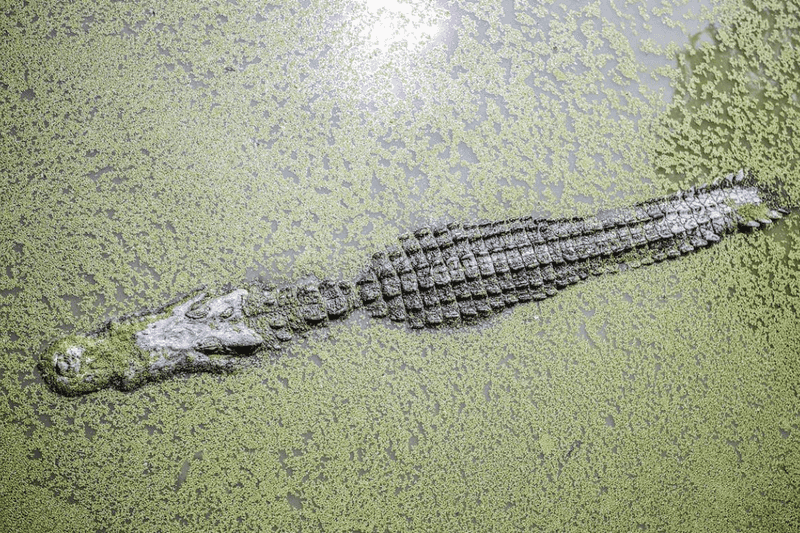
Unlike true hibernation, alligators enter brumation – a state where their metabolism dramatically slows but doesn’t shut down completely. Their heart rate drops from 30-35 beats per minute to just 2-3 beats per minute, conserving precious energy.
Food digestion practically stops during this period. An alligator can survive months without eating, living off fat reserves accumulated during warmer seasons.
Body temperature regulation shifts to match their environment rather than maintaining a constant internal temperature, allowing them to function at lower energy costs when winter temperatures would otherwise make survival difficult.
3. Strategic Sunbathing Sessions
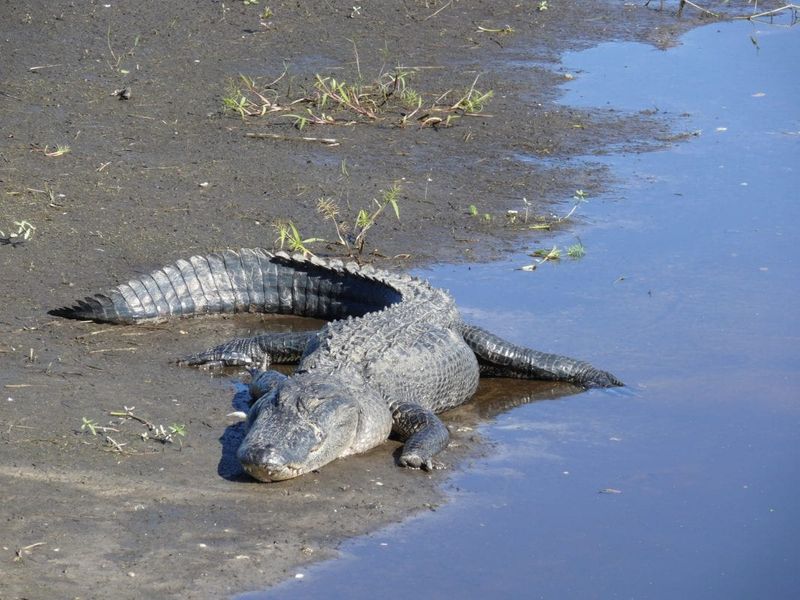
Even during winter, alligators emerge on sunny days for strategic basking sessions. These cold-blooded creatures absorb heat through their dark, scaly skin, raising their body temperature just enough to maintain essential bodily functions.
The behavior follows a careful pattern – they choose south-facing banks that receive maximum sunlight and often return to the same spots repeatedly. This opportunistic sunbathing provides crucial warmth without expending energy.
Amazingly, alligators can sense even small temperature changes and will move between sun and shade to regulate their body temperature with remarkable precision.
4. Underwater Den Engineering
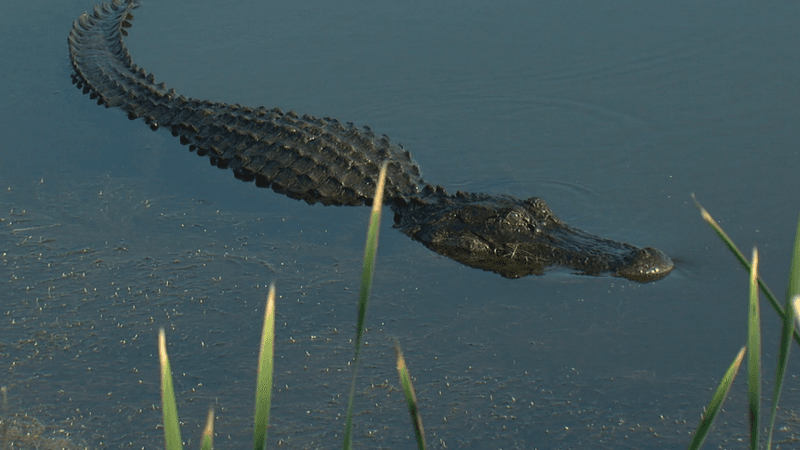
Alligator holes – underwater dens dug into banks – become winter survival shelters. These crafty reptiles create these caverns using powerful tails and legs, sometimes extending 20 feet into shorelines with multiple chambers.
The dens maintain a more stable temperature than open water, offering protection when surface waters approach freezing. During extreme cold snaps, multiple alligators might share a single den, creating a rare display of reptilian tolerance.
These underwater retreats serve multiple purposes beyond winter survival, functioning as nesting sites and drought refuges throughout the year – evidence of the alligator’s impressive environmental engineering skills.
5. Freeze-Resistant Blood Chemistry
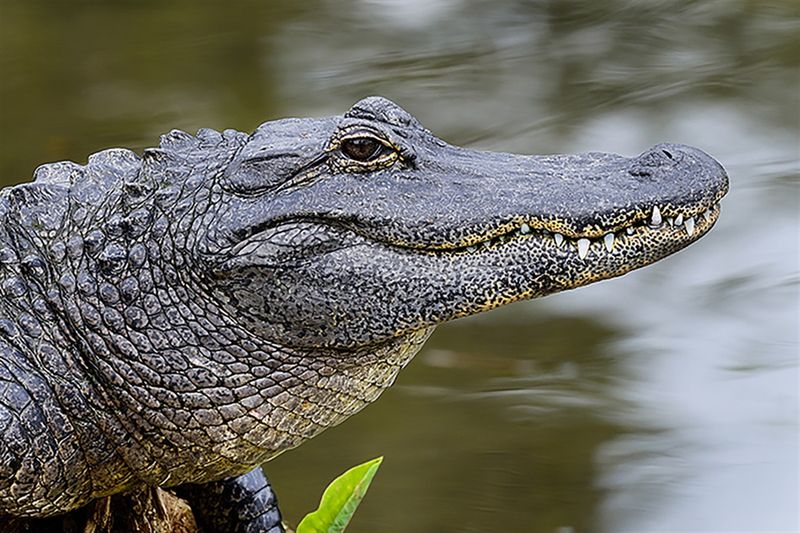
Alligator blood contains natural antifreeze compounds that prevent ice crystal formation in their tissues. Their specialized blood chemistry allows them to survive in water that’s nearly freezing without suffering tissue damage.
Researchers have identified unique proteins in alligator blood that function similarly to antifreeze. These compounds lower the freezing point of their blood and prevent ice crystals from forming between cells.
This remarkable adaptation explains how alligators can survive being partially frozen in ice – a feat that would kill most other animals. Scientists are studying these compounds for potential medical applications in organ preservation.
6. Lung Capacity Champions
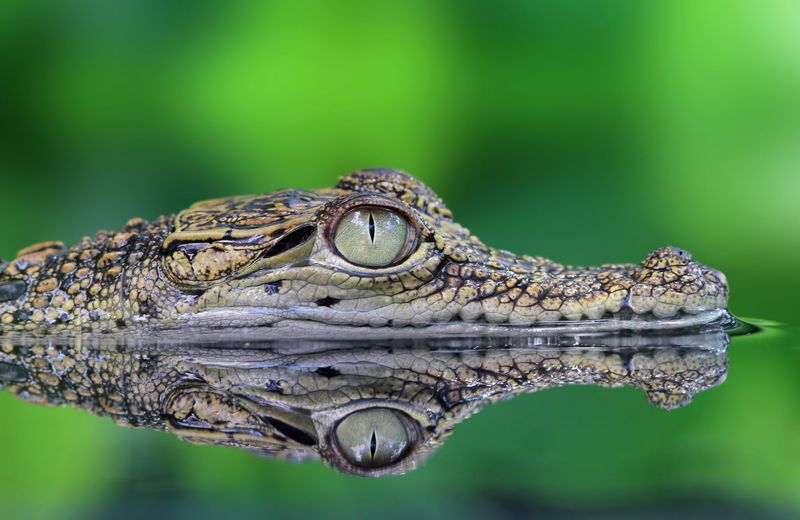
Alligators possess extraordinary lung capacity that becomes crucial during winter. Their specialized respiratory system allows them to remain underwater for up to two hours without surfacing for air – a vital skill when ice covers their habitat.
The secret lies in their unique diaphragm structure and efficient oxygen use. Unlike mammals, alligators can redirect blood flow to essential organs during extended submersion, prioritizing brain and heart function.
This breathing superpower means they rarely need to break through ice to breathe in winter. When they do surface, they can refresh their entire lung capacity with just one or two breaths before returning to their underwater sanctuary.
7. Cold Weather Hunting Tactics

While their metabolism slows dramatically, alligators don’t completely stop hunting during winter. They develop specialized cold-weather hunting strategies, becoming opportunistic ambush predators when conditions allow.
Moving with surprising speed despite the cold, they can lunge from seemingly motionless positions when prey ventures too close. Their hunting frequency decreases significantly – perhaps one meal every few weeks rather than several times weekly during summer.
Alligators become masters of energy conservation, only pursuing prey when success is likely. They’ll often target winter-weakened animals or those that come to water sources, minimizing the energy spent on unsuccessful hunts.
8. Group Survival Behavior
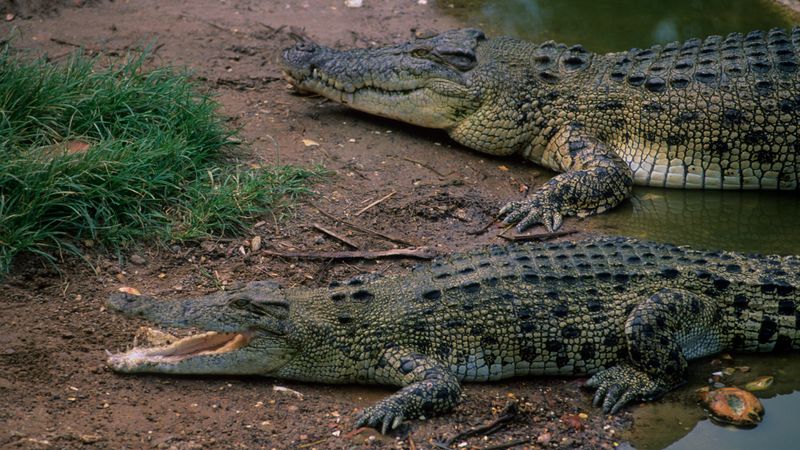
Winter brings out unusual social behaviors in normally solitary alligators. They gather in deeper water areas called “alligator holes” – natural or self-created depressions that retain water during cold periods.
These winter congregations can include dozens of alligators packed closely together, creating what scientists call “dormant aggregations.” The behavior likely serves multiple purposes: shared body heat, protection from predators, and access to water that won’t completely freeze.
Remarkably, their typical territorial aggression diminishes during these winter gatherings. The temporary truce allows them to share limited suitable habitat until warmer temperatures return and they resume their solitary lifestyles.
9. Temperature-Dependent Sex Determination

Alligators possess one of nature’s most fascinating reproductive adaptations – temperature-dependent sex determination. The temperature at which their eggs develop determines whether hatchlings will be male or female, with no genetic influence.
This remarkable system plays a crucial role in winter survival across generations. Warmer nests (above 93°F) produce males, while cooler nests (below 86°F) produce females, with mixed sexes between these temperatures.
The adaptation ensures population balance across changing seasons and climate patterns. After winter, females emerging from brumation can select nesting sites that will produce optimal sex ratios for population sustainability – a sophisticated evolutionary strategy.
10. Specialized Skin Adaptations
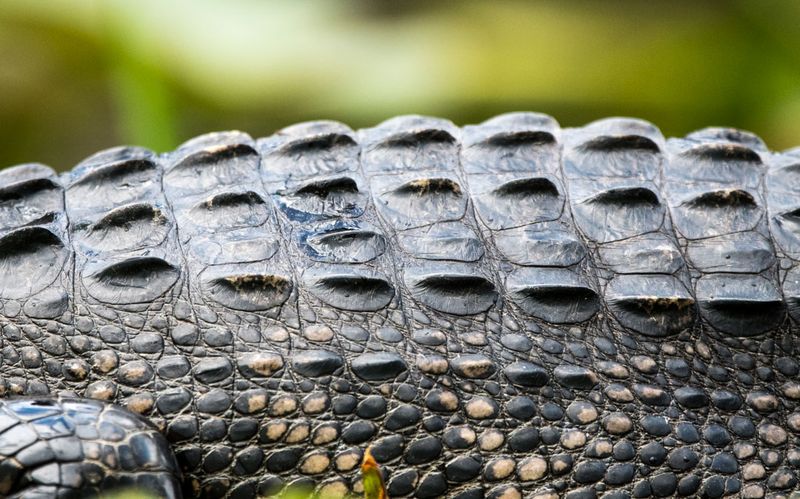
Alligator skin serves as sophisticated environmental armor during winter. Their scales contain small bone plates called osteoderms that act as solar panels, absorbing and transferring heat to blood vessels directly beneath.
Blood vessels near the skin surface can dilate or constrict to control heat absorption. When basking, vessels dilate to capture maximum warmth; in cold water, they constrict to retain core body heat.
The distinctive ridges along their backs aren’t just for show – they increase surface area for heat absorption while minimizing water resistance. This specialized skin allows alligators to rapidly warm themselves during brief winter sunny periods.
11. Frozen Survival Stance

When caught in freezing conditions, alligators enter a remarkable state scientists call “frozen alertness.” They extend their snouts above the ice while allowing their bodies to be encased, entering a trance-like state that requires minimal oxygen.
Their vital organs continue functioning at extremely reduced rates, sustained by minimal oxygen intake. Blood flow prioritizes the brain and heart, while limbs receive just enough circulation to prevent tissue damage.
Most impressively, alligators can sense temperature changes through the ice and respond when thawing begins. There are documented cases of alligators surviving in ice for over a week, breaking free when conditions improve with no apparent harm.
12. Ancient Evolutionary Advantage
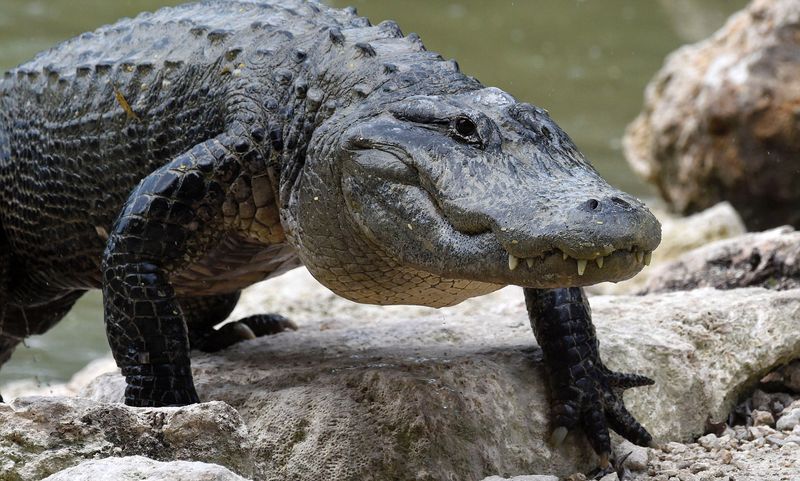
Alligators’ winter survival techniques aren’t recent adaptations – they’re the result of over 200 million years of evolutionary refinement. These living fossils survived the extinction event that wiped out dinosaurs partly due to these cold-weather capabilities.
Their ancient lineage provided time to perfect brumation and cold-weather responses. Modern alligators are nearly identical to their ancestors from 8 million years ago, suggesting their winter survival strategy reached optimal efficiency long ago.
This evolutionary advantage explains why alligators can thrive across diverse habitats from Texas to North Carolina, surviving occasional freezes that would eliminate less-adapted reptiles from these regions.

